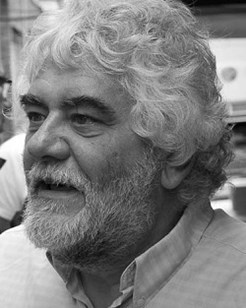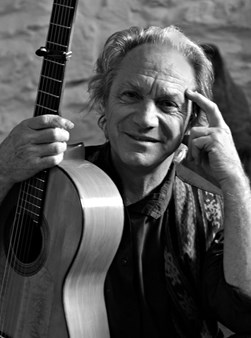Michele Liso – Isabèl

M
Dodicilune
Über das Album schreibt der aus der Region Apulien stammende Gitarrist Michele Liso: „Isabèl’ was born in 2018 from a compositional need rooted in my past. I have a classical training, from which, however, I slowly distanced myself, feeling the need to express my own personal way of playing. This need led me to delve into the sound of South American and Spanish music, lands where the guitar is one of the fundamental instruments. The objective of this first project is to create a link between the classical guitar and the popular guitar tout court, capable of bringing out the strengths of guitar practice and popular rhythmicity at the same time. The title of the album is a homage and a gift to my pianist mother, the meaning that music has for me is therefore intimately connected to her figure. The tracks on the album have a great classical influence, but at the same time are open to the rhythmic and virtuoso world of flamenco and South American genres. If in the name Isabella there is the classical root, in Isabèl I see a leap from the classical world towards the multifaceted universe of flamenco, South American and popular music. ‘It is as if I wanted to represent the metamorphosis that the inner image of my mother, as well as of music, has undergone and continues to undergo.’“
Es gibt sie die Meisterwerke für akustische Gitarre, nicht nur von Sor. Und ja, es gibt die Meistergitarristen wie Segovia und Yepes. In deren Fußspuren ist auch Michele Liso unterwegs. Er pflegt die Musik bzw. Etüden für spanische akustische Gitarre bereits mit dem Eröffnungsstück „Entropia“, nimmt uns mit in die Gassen andalusischer Städte und lässt auf uns das Licht des Südens fallen. Gewiss gegenüber Ypes und Segovia verzichtet Liso nicht auf Perkussion, auch nicht auf das rhythmische Klatschen mit den Händen und auf Chorgesang. Beides erleben wir bereits am Ende des ersten Stücks. Dabei scheinen für die Perkussion auch Bongos zum Einsatz zu kommen. Nein, es folgt kein Flamenco, sondern ein Samba auf das Eröffnungsstück. Beim Zuhören können wir kaum stillsitzen. Die Gitarrenklänge fordern uns nachhaltig zum Hüftschwung und zu Tanzschritten auf. Olé und oyé … Übrigens, die Stimmen des Urwaldes, vor allem Vogelstimmen, haben die Musiker in die „Mondsamba“ integriert. Doch im wesentlichen ist es der Gitarrist, der für Rhythmus und melodische Inszenierung sorgt. Und mit „Tarantella“ ist auf dem Album ein weiterer Tanz zu erleben. Im Kern handelt es sich um einen Solotanz, der eigentlich nur mit Tambourinen begleitet wird. Doch Liso schwelgt mit seinem Saiteninstrument in diesem Tanz mit leichten Schritten. „Viajero“ („Reisender“) erinnert hier und da an Flamenco und zugleich an den klassischen spanischen Gesang, den man unter anderem in Sevilla pflegt. Und auch das nachfolgende „Creta“ ist in einem Flamenco-Duktus gehalten, obgleich die griechische Insel Kreta besungen wird. Abgeschlossen wird das Album, ein Hörgenuss für diejenigen, die Gitarrenmusik schätzen, mit „Sonatina Romántica“.
© fdp 2025
Info
Dodicilune
Musicians
Michele Liso, classical guitar
Gabriel Prado, choirs (1, 6), percussions* (2, 3, 4, 5, 6, 8)
Giulia Gentile, choirs (1, 6, 7), violin (6, 7)
Railton Sales De Oliveira, percussions* (2)
TRACKS
1) Entropia
2) Samba de Luna
3) Niña caprichosa
4) Tarantella
5) Viajero
6) Hera
7) Jardín de moreras
8) Creta
9) Por un Amigo
10) Sonatina Romántica













